Image via: Austin Maynard Architects
Timber is the traditional material for shingles, and in Australia it is often made from imported western-red cedar, a durable wood from North America.
Cedar shingles are resistant to harsh weather and environmental conditions. Shingles take on a textured and rugged appearance as they naturally weather. They also grey with age unless stained, painted or coated with water-repellent preservative. Wood shingles are a fire hazard and some local Australian governments restrict their use.
Cedar shingles are resistant to harsh weather and environmental conditions. Shingles take on a textured and rugged appearance as they naturally weather. They also grey with age unless stained, painted or coated with water-repellent preservative. Wood shingles are a fire hazard and some local Australian governments restrict their use.
Excerpt from Article originally from Rebecca Gross via Houzz.
Think of a shingle-clad house and traditional American styles probably leap to mind – the weathered grey Cape Cods on the East Coast, the grand Shingle-style homes of the late-nineteenth century, or the rich red cedar-skinned homes set among lush forests.
But the use of shingles has taken a more contemporary turn in recent years, particularly in Australia. Used to clad clean and simple forms or highlight sections of facades, shingles bring detail and texture to the exterior of a home. Considering shingle cladding for your home? Read on to learn all about it, and peruse a selection of homes where it’s been used to great effect.
What are shingles?
Shingles are a roof and wall covering consisting of individual overlapping elements. On walls, they are generally fixed over sheathing or timber battens.
Shingles are a roof and wall covering consisting of individual overlapping elements. On walls, they are generally fixed over sheathing or timber battens.
Shingles are laid in courses or rows from the bottom to the top of the wall, with each successive course overlapping the joint of the one below. They are typically applied in straight single courses, but variations on this can be used to create interesting, decorative effects.
Image: Battersby Howat Architects
Materials
Wood has been the traditional material of choice for shingles. In Australia, timber shingles are often made from imported western red cedar, which is one of North America’s most durable woods. It is more resistant to harsh weather and environmental factors than other softwoods. But shingles can also be made from stone, asphalt, slate, zinc and other materials.
Wood has been the traditional material of choice for shingles. In Australia, timber shingles are often made from imported western red cedar, which is one of North America’s most durable woods. It is more resistant to harsh weather and environmental factors than other softwoods. But shingles can also be made from stone, asphalt, slate, zinc and other materials.
image: Austin Maynard Architects
Shapes
While shingles are flat rectangular shapes, there are two types of timber shingles: shingles and shakes, and the difference is how they are made. A shingle is generated from a sawn piece of timber and is characterised by its relatively smooth surfaces. A shake is essentially a split piece of timber with a strongly textured and more rugged, irregular surface. Shakes may also have a thicker butt end than a shingle.
While shingles are flat rectangular shapes, there are two types of timber shingles: shingles and shakes, and the difference is how they are made. A shingle is generated from a sawn piece of timber and is characterised by its relatively smooth surfaces. A shake is essentially a split piece of timber with a strongly textured and more rugged, irregular surface. Shakes may also have a thicker butt end than a shingle.
Image: Kennedy Nolan
Shingles made from zinc and laid in a diamond pattern can create an appealing, modern effect, as seen in this St Kilda home.
Image: Charlie Barnett Associates
Sizes
Wood shingles generally follow standard sizes, varying from about 400 to 600 millimetres in length and 10 to 13 millimetres in thickness. They can also be custom made.
Wood shingles generally follow standard sizes, varying from about 400 to 600 millimetres in length and 10 to 13 millimetres in thickness. They can also be custom made.
image: Base Building Design and Interiors
Pros of shingles
- Cedar shingles are resistant to harsh weather and other environmental factors.
- The natural weathering of timber shingles creates a textured, rugged appearance that allows a house to sit beautifully in its natural environment.
- Timber shingles are produced from a renewable resource, especially if harvested from a sustainable forest.
image: Union Studio, Architecture & Community Design
- A pro or a con, depending on the desired effect, wood shingles will grey with age and weather, unless stained, painted or coated with water-repellent preservative. Pigmented stains may be used to retain a natural-looking timber colour.
image: Davista Architecture LTD
Cons of shingles
- Wood shingles are a fire hazard and some local Australian governments restrict their use
image: Austin Maynard Architects
Be inspired by these shingle-clad homes
Tower House by Austin Maynard Architects is a renovation and extension to a weatherboard home in Alphington, Melbourne. The house is comprised of numerous structures with western red cedar shingles cladding many of the exterior walls.
Tower House by Austin Maynard Architects is a renovation and extension to a weatherboard home in Alphington, Melbourne. The house is comprised of numerous structures with western red cedar shingles cladding many of the exterior walls.
image: Austin Maynard Architects
The design team applied the wooden shingles to the gable ends of structures. Left untreated, they will weather naturally with time.
image: Schored Projects
This house in Geelong is home to a newly retired couple who wanted a home that would integrate with the surrounding landscape and garden. Schored Projects used slate shingles on the exterior and the entrance interior, providing a no-maintenance material with a long lifespan.
image:Jeff King & Company
Cedar shingles have been used on the facade of this San Francisco house to create a highly durable exterior that requires no painting or maintenance. The more traditional aesthetic and rugged appearance of the shingles stands in contrast against the sharp, geometric lines of the house, creating a natural yet thoroughly modern look.
image: Jane Riddell Architects
The rear addition to this California bungalow in Hawthorn, Melbourne boasts a shingle-clad roof and walls. The architect applied the same slate shingle to both surfaces to create a seamless transition between the old and new parts of the home.
image: Nick Noyes Architecture
The rugged California coastline inspired the materials palette of copper, slate, warm woods and timber shingles used here. The low-key, natural palette ensures the home blends into the local environment and landscape.
image: EWERT LEAF PTY LTD

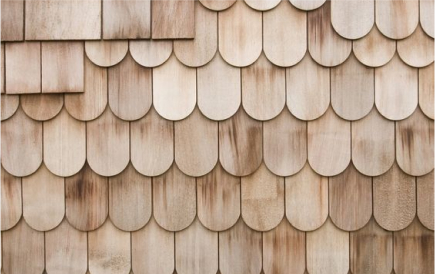
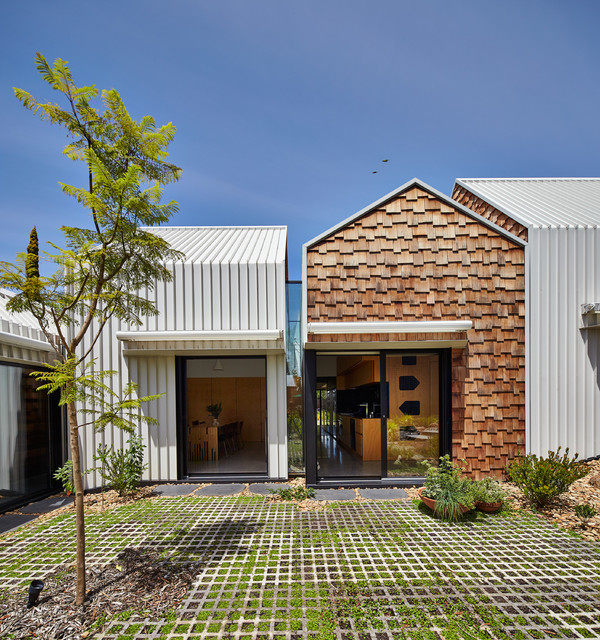
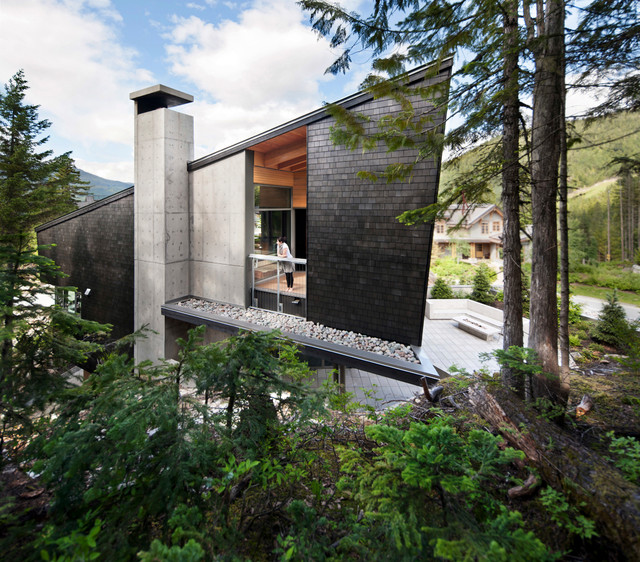




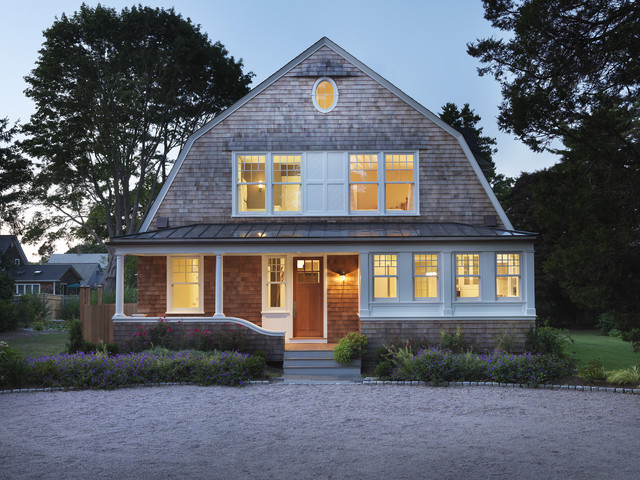
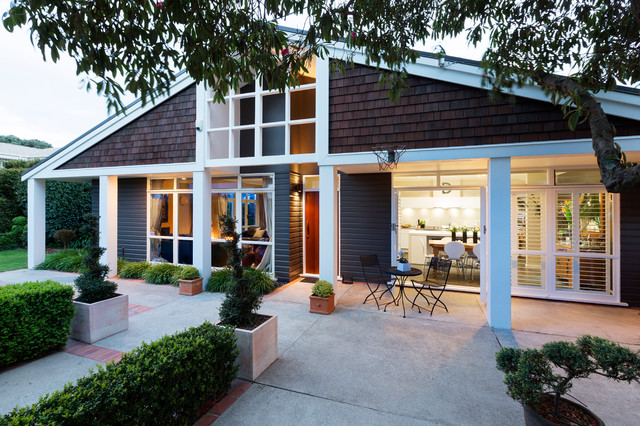



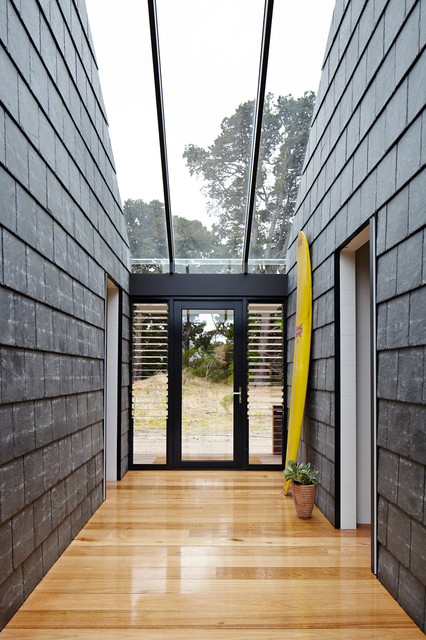
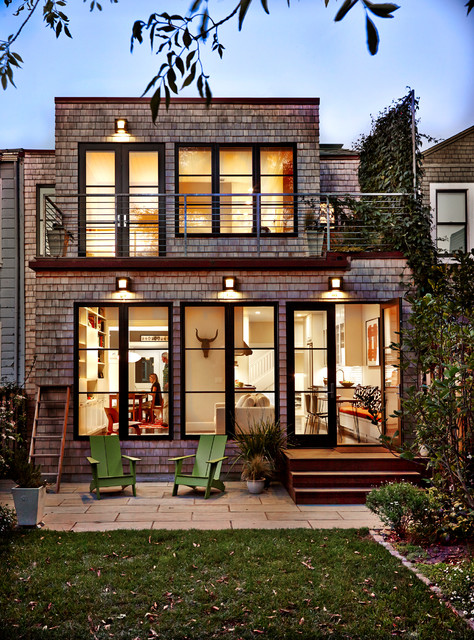
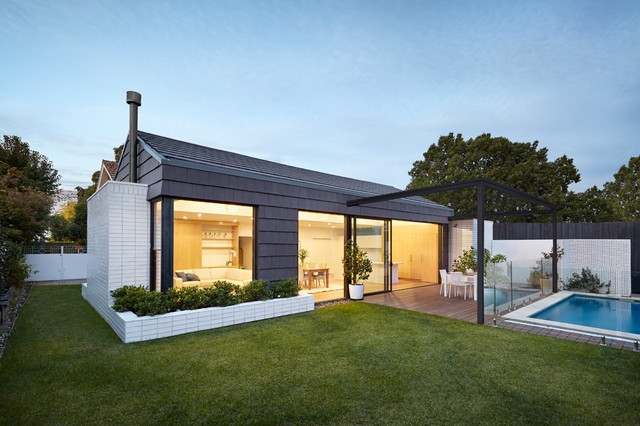
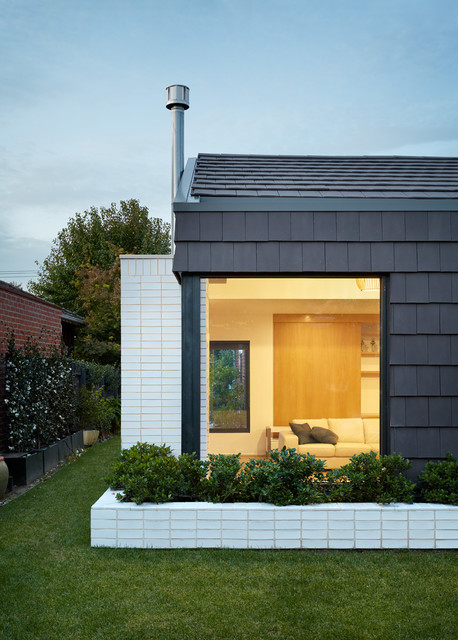

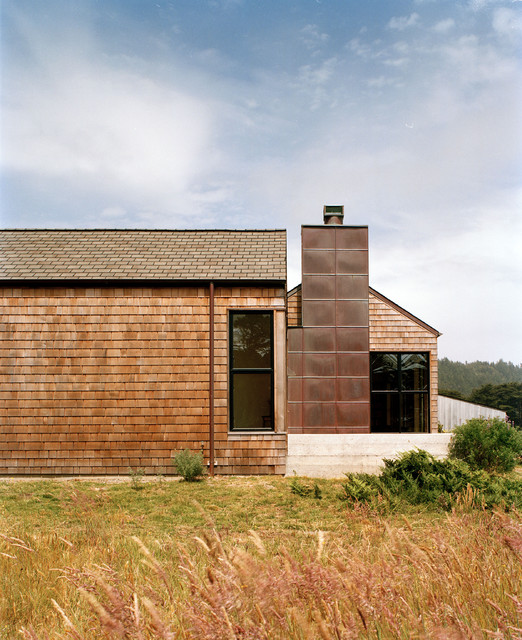

Shingles are individual overlapping elements that are generally fixed over sheathing or timber battens. They are laid in courses, or rows, from the bottom to the top of a wall, with each successive course overlapping the one below. Shingles are typically applied in straight, single courses, but variations on this can be used to create interesting, decorative effects.